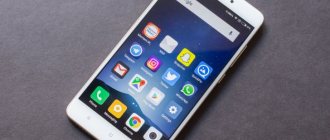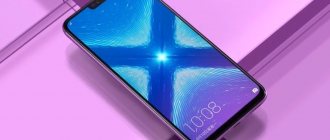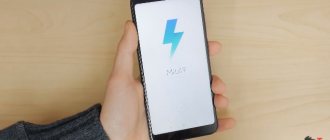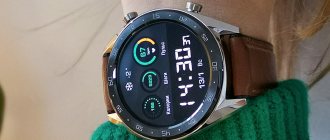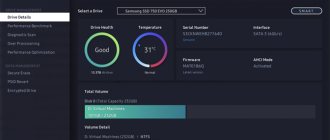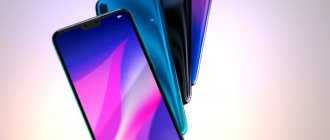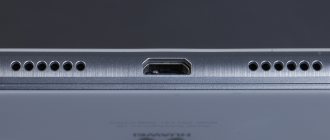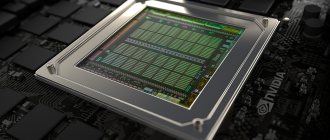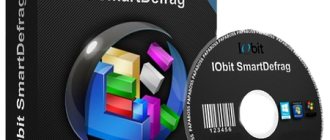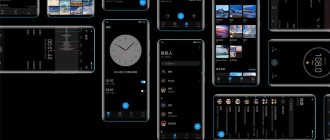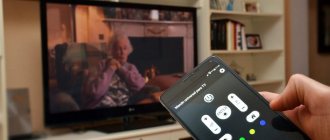Perhaps everyone who has at least once tried to find a good smartphone worth up to 20 thousand rubles has discovered that there are very few truly high-quality models among them. For the most part, these are all kinds of vendors who, sacrificing the quality of components, strive to technologically get closer to the flagships, while other “mid-rangers” are simply unreasonably overpriced.
Apparently, Huawei designers noticed this problem and decided to release the Huawei P Smart (FIG LX1), which will solve it. This is a widescreen smartphone, without a hint of the “bezel-less” design that is fashionable today, with a dual camera, but without any software tweaks. Overall, this is a balanced phone with good specifications and an affordable price. It is a worthy continuation of last year’s extremely successful smartphone – Huawei P8 lite (2017).
What new can the heir offer us? What hidden features of Huawei P Smart can help it repeat the huge success of its predecessor? Our review of Huawei P Smart will answer these questions.
general information
Our review of the Huawei P Smart shows that the device is a worthy continuation of the flagship “P” model range, but for more affordable money. It is distinguished from last year's Huawei P8 lite by a slightly improved software platform, an updated camera, and an elongated 5.65-inch display (FullView) with high resolution: thanks to the reduced frames around the screen, the new product is only 3 millimeters longer.
As usual, Huawei has kept the release date of the Huawei P Smart a secret for a long time. The new model was announced in December 2020. The FIG LX1 smartphone went on sale at the beginning of 2018. Today you can purchase it in the brand’s official online store using smart payment.
Display
With rather modest dimensions (7.45 × 72 × 150 millimeters), our “hero” has a fairly large 5.65-inch screen with a resolution of 2160 × 1080 pixels. The brightness level of the display allows you to read and view pictures without stress even on the sunniest day. The light sensor and auto-brightness level function well. The device fits comfortably in the hand and responds instantly to touch.
Another feature of the new smartphone is a high-quality oleophobic coating that “softens” the display to the touch. While reviewing the Honor Huawei P Smart, we found that the FHD+ resolution does not allow us to clearly see small elements on the screen, but this only applies to Internet resources that are not adapted for mobile gadgets. Fortunately, the resolution can be manually changed and auto-adjusted based on power consumption.
Cameras
The 8 megapixel front camera pleased me with excellent self-portraits. Detail is good, white balance is good. I noticed that the exposure was slightly raised, but this can be attributed to a feature - the face always turns out lighter than it really is.
The main camera also takes good pictures. Color rendition, detailing - everything is on point.
Of course, I would like to get more active HDR, but what we have is not bad at all. By the way, Huawei is still introducing Auto HDR. But the feature is extremely useful.
No HDR
HDR
Since we have two rear cameras (13 and 2 megapixels), there is a bokeh effect or background blur. Of course, getting a good shot is quite difficult: you need good lighting, a subject in the foreground without curls (preferably with straight hair) and a certain perseverance. With 3-4 frames you get a pretty nice shot that looks great on a smartphone screen or in an Instagram feed.
Video recording at Full HD level at 30 frames per second. Yes, the stream speed is not impressive (17 Mbit/s), and therefore the video quality is average or even slightly lower. If you don’t chase creativity, but just shoot something for information from time to time, then the capabilities of the Huawei P smart camera are enough.
And yes, there is no optical or electronic stabilization, so when shooting video we try to curb trembling in our hands.
Design
Huawei P Smart is available in three colors: black, gold and blue. We took the Black Huawei P Smart for review. This is a sleek, thin and simple smartphone. Most of the front panel is occupied by a screen created using the full lamination technique (without an air “cushion”). It looks great.
The back is mainly made of metal, with plastic inserts in the lower and upper parts. At the top are the dual camera lenses.
The bottom edge is equipped with a speakerphone, a main microphone, a micro-USB connector, and a miniJack for a headset and headphones. At the top there is only a microphone for noise reduction.
There is a perfectly working fingerprint scanner at the back, which is not entirely convenient. It made more sense to place it in the front, where the Chinese designers placed the useless “HUAWEI” inscription. Although this is a subjective opinion.
Huawei P Smart is thin, narrow and strong. Due to the absence of sharp edges, the device is quite comfortable to use. With your thumb you can comfortably reach both the physical lock key and the over-screen navigation “buttons”. But you can’t easily reach the navigation curtain, but this cannot be called a problem: your index finger fits exactly on the fingerprint scanner located at the back, and with it you can easily control the gadget. It was probably not in vain that he was placed there after all.
In general, the design and ergonomics of our “hero” leave only a positive impression.
Huawei P Smart review: elegant, fast, but not perfect
Huawei opened 2018 with a new smartphone from the “P” line - Huawei P Smart. This is a balanced device with good technical characteristics and a reasonable price, a continuation of the very successful Huawei P8 lite 2020 model - more than 10 million of these devices were sold worldwide in 10 months. In this review, we will look at what Huawei P Smart offers that will help it repeat the success of its predecessor.
Why Huawei P Smart is interesting
If you do not take into account devices under the Honor brand, Huawei produces 4 lines of smartphones: affordable G&Y, more technologically advanced and stylish Nova, business flagships Mate and the so-called “lifestyle” flagships of the P series.
Huawei P Smart is the simplest device in the “flagship” P line of 2018. What distinguishes Huawei P8 lite 2020 from its predecessor is its high-resolution “elongated” screen (FullView) (18:9 aspect ratio) with a diagonal of 5.65″ with almost the same dimensions: due to smaller frames around the display - Huawei P Smart is only 3 mm longer, — updated camera, hardware and software platform.
What Huawei P Smart looks like and how convenient it is
Two or three versions of this smartphone are available: black, dark blue, and light “golden” (black, blue, golden). The case in all cases is metal with small plastic single-color inserts at the top and bottom of the device. The front part is black in dark devices and white in “golden” ones. When choosing and buying a smartphone, I advise you to look at it in person - all options look great.
We reviewed the light version of the device. Depending on the lighting, its “back” seemed either silver or golden, and in the bright winter sun it even shone barely pink - to my taste it looks discreet, restrained and “noble”.
On the bottom edge of the phone there is a speakerphone, a microUSB connector, a main microphone, and a miniJack for headphones or a headset. On the right is a block of volume up and down buttons, a lock button, and a button to turn the device on and off. On the left side there is a combined tray for nanoSIM and microSD (either two SIM cards, or a SIM card and a memory card). On top there is only a microphone for noise reduction.
In the upper half of the “back” of the device there is a round pad for the fingerprint sensor, a little higher there are slightly protruding lenses of the main camera (protected from damage by the rim), and a flash next to it.
The front part is occupied by a touch screen, above it is a camera lens, a speaker, a proximity sensor, and below it is the inscription “Huawei”.
Huawei P Smart is strong, compact, narrow, thin. It has no sharp edges and is convenient to use. I usually hold my smartphone in my right hand: the P Smart fits into my palm so that with my thumb you can equally comfortably reach both the on-screen navigation “buttons” and the physical lock button. It’s not so easy to reach the notification curtain, but this is not a problem: the index finger falls directly on the fingerprint scanner on the back, and with its help you can control the smartphone (opening and closing the notification curtain, releasing the camera shutter, scrolling through photos and videos in the gallery, turning off the alarm is enabled in the settings).
Is the Huawei P Smart screen good?
The device has an IPS matrix, protected by glass with a good oleophobic coating. Resolution 1080x2160 pixels (FullHD+) with a diagonal of 5.65″ (pixel density per inch - 427), aspect ratio 18:9 (2:1 if you like). EMUI 8 allows you to lower the resolution to HD+ in the settings to improve the performance of the device and save its battery (turned on manually for constant use or automatically when the battery is low).
Huawei P Smart screen under the bright winter sun
The display is bright, there is auto-adjustment, it works quickly. If desired, the “temperature” of the screen can be adjusted. There is a switchable blue light filter, its intensity and response time can be adjusted. As a result, the smartphone is comfortable to use both in the dark and in bright sun.
For an objective assessment, we measured screen quality using a Datacolor Spyder4 colorimeter and the HCFR Colormeter software package at standard settings at maximum brightness and the blue light filter turned off.
How we measure screen quality
The screen is well calibrated, contrasty, and somewhat cool; color gamut is close to sRGB. The maximum brightness is 510.223 cd/m2, the black field brightness is 0.47 cd/m2, and the static contrast is 1086:1.
Is the Huawei P Smart camera good?
The main camera is double: the main module is 13 megapixels, the secondary one is 2 megapixels. It is “auxiliary” because it is used only for creating photographs simulating a wide open aperture and portrait mode.
1-3 - shooting with imitation of a wide open aperture (bokeh), 4 - portrait mode, 5 - selfie
There is no optical stabilization. In good lighting, you can get good pictures, although the P Smart is afraid of contrasting scenes. In poor light (twilight, indoors), the photos are noticeably noisy. The camera works very quickly in any mode and in any lighting, and proprietary software partially compensates for the physical limitations of the camera.
To put it simply, the camera is fast and not bad, but this is far from the “flagship” level that we are already accustomed to in more expensive Huawei devices.
Sound Huawei P Smart
The smartphone is equipped with a monaural speaker for hands-free calling. It’s loud, it sounds good, even if you cover it you can’t drown it out completely—it gives the impression that the sound is coming from the body of a smartphone. Interesting effect, I liked it. The quality of speech transmission is good, there is noise reduction using a system of two microphones - the interlocutors heard me well even near the roadway, as well as in windy weather.
There is a miniJack connector (3.5 mm). The sound is good, like for a smartphone. Huawei's proprietary Histen sound "improvement" technology significantly changes the sound of a smartphone in headphones: there are several equalizer settings, a choice of headphone type, the sound can be added "volume", it becomes more "dense".
The smartphone has Bluetooth version 4.2 LE, A2DP, with simultaneous connection of up to 2 devices. During testing, the connection to my stereo headset was stable, and the sound quality was (predictably) the same as usual.
Hardware, software and battery Huawei P Smart
Huawei P Smart is built on an energy-efficient 8-core Kirin 659 processor with a maximum clock frequency of 2.36 GHz, which has proven itself in the Honor 7X and Huawei Nova 2 already familiar to our readers. The phone has 3 GB of RAM and 32 GB of ROM, which can be increased for microSD account.
The smartphone is equipped with a 3000 mAh battery, which, together with proprietary energy-saving technology, ensures full day operation of the smartphone.
The device runs on the EMUI 8 operating system (Android 8.0 Oreo), is equipped with a very fast fingerprint scanner with gesture support, and NFC (hello, Android Pay).
The smartphone does not slow down, the interface is responsive, traditionally “heavy” applications like Facebook launch and work fine.
Antutu, GeekBench, 3DMark, PCMark
The EMUI serial number immediately increased from 5 to 8 - according to company representatives, specifically so as not to confuse us users. The EMUI version number now matches the Google mobile platform version number. I prefer “pure” Android, but I have to give EMUI 8 its due: it doesn’t spoil the Oreo “cookie” at all, and, unlike other popular skins, it doesn’t hide Android 8 (like Quick Shortcuts or notification dots on icons), but complements his. This is the same system that we have already seen in the Huawei Mate 10 Pro, minus some features related to AI and connection to a projector and monitor.
Read our review of Huawei P8 lite 2020, there is a lot of attention paid to EMUI 5; In the new version, among the significant changes, I will note settings related to the device’s unusual screen aspect ratio, split screen for simultaneous work with two applications, and improved energy saving.
The battery charge of the smartphone was enough for a full day of work. And if you suddenly find yourself far from charging, the imaginary disadvantage of the smartphone - the “outdated” microUSB port, and not the new USB Type-C - will turn into its advantage. Now you can even find a microUSB cable in your grandmother’s purse. In addition, EMUI 8 can operate in ultra-low power consumption mode, when the smartphone turns into a regular “dialer” - so it can work for hours.
The smartphone supports 3G and LTE networks, Wi-Fi 2.4 GHz. Wi-Fi 5 GHz was not delivered, which (anticipating the bewilderment of some readers) I do not consider a big drawback: it’s good when it’s there, but it’s okay when it’s not.
Bottom line
Huawei P Smart is available for pre-order from January 26, and will go on sale from February 8 at a recommended price of UAH 7,999. If you are thinking about buying, you can save 1000 UAH by pre-ordering a smartphone before sales start.
Huawei P Smart has several worthy competitors in its price segment. It differs from most of them in its elongated display and dual camera. Worthy of attention are the Motorola Moto G5 Plus (almost pure Android), Samsung Galaxy J5 2020 (more modest specifications), Xiaomi Mi A1 (“pure” Android, lower price, dual camera, but a regular screen and no NFC). Nearby on the shelves will be the “cousin” Honor 7X (more design, higher price, no NFC), and the older brother Huawei P8 lite 2020 (lower price, older platform and OS, regular camera and screen).
As you can see, Huawei has prepared a worthy replacement for the popular P8 lite 2020. For about $240–270 you can buy a nice, fast smartphone with a dual camera, an excellent “elongated” display and a convenient “OS” on the latest Android.
“Smart” can be translated as “smart”, “elegant”, “fast”, even “fashionable” - despite some shortcomings, Huawei P Smart deserves all these epithets.
4 reasons to buy Huawei P Smart
- Are you looking for a beautiful, fast phone at a reasonable price?
- We've been waiting for a long time for a smartphone with an “elongated” 18:9 display
- You need a very fast camera with bokeh mode
- Do you want a smartphone with the latest Android and a fast, functional shell?
Huawei P Smart
One of the best offers for its price,
Huawei P Smart is built on an 8-core Kirin 659 processor with a maximum clock speed of 2.36 GHz. The phone has 3 GB of RAM and 32 GB of ROM, and has a microSD slot. The device runs on the EMUI 8 operating system (Android 8.0 Oreo), is equipped with a dual main camera, a very fast fingerprint scanner with gesture support, and NFC.
Buy on AliExpress
Elegant and fast
3 reasons not to buy Huawei P Smart
- You absolutely need 5 GHz Wi-Fi and USB Type-C
- You need an uncompromising camera and for this you are willing to fork out money
- You were prescribed a “pure” Android without shells
| Technical specifications Huawei P Smart FIG-LX1 | |
| Display | IPS, 5.65″ FHD+ (2160×1080), 18:9 FullView, 427 ppi, 2.5D glass without air gap |
| Frame | dimensions: 150.1x72.05x7.45 mm, weight: 143 g |
| CPU | HiSilicon Kirin 659, 64 bit, 16 nm, 4xARM Cortex-A53, 2.36 GHz, 4xARM Cortex-A53, 1.7 GHz, Mali-T830 MP2 graphics accelerator |
| RAM | 3 GB |
| Flash memory | 32 GB, MicroSD up to 256 GB |
| Camera | main: 13 MP + 2 MP, LED flash. Front: 8 MP, F2.0. Bokeh, portrait mode, shooting using gestures or a fingerprint scanner |
| Wireless technologies | Wi-Fi 802.11 b/g/n 2.4 GHz, NFC, Bluetooth 4.2 LE |
| GPS | GPS, AGPS, GLONASS |
| Battery | 3000 mAh, non-removable |
| operating system | EMUI 8 (Android 8.0 Oreo) |
| Sim card | 2 nanoSIM or 1 nanoSIM + microSD |
| Other | Aluminum case, three colors, fast fingerprint scanner, USB 2.0 |
| Additional Information | Huawei P Smart official page (information, specifications) |
For those who want to know more
- Review of Huawei P Smart+: the most successful youth smartphone of 2018
- Huawei P Smart 2020 review: potential hit of the season
- Honor 10 Lite review: Huawei P smart 2020 twin with improved camera
- Definitely, wow: review of the Huawei P Smart Z smartphone
- The best smartphone under 7000 hryvnia
Performance and autonomy
The performance in P Smart is ensured by the 8-core HiSilicon Kirin 659 chipset, created by Huawei designers, the Mali accelerator - T830 MP2, as well as 3 Gb or 4 Gb of RAM, depending on the modification. This processor ensures stable operation of the proprietary Emotion 8.0 system, built on the Android Oreo OS.
In the AnTuTu test, our “hero” was able to score 88,000 points, which is quite good for a smartphone in the mid-price segment.
A fairly important addition is the Kirin 659, an i5 coprocessor that is responsible for the operation of elements in the background and peripheral sensors. This means that if you, for example, forget to close the navigation application, which continues to hang in the memory and use GPS, then the load falls on the i5, which can significantly reduce the power consumption of the smartphone in sleep mode.
The device is good, but you won’t be able to play such “heavy” video games as, for example, World of Tanks Blitz. By setting the graphics settings to maximum, you will be able to run the game, but the frame rate will noticeably jump - from 10 to 18 FPS. Switching to medium settings will increase the frequency to 35 FPS.
A 3000 mAh battery provides the device with a day of battery life with a pair of SIM cards installed and the display glowing for three hours. With gentle operation and medium settings, the device can last a whole day. But, if you are used to using your smartphone to the maximum, then the built-in battery will not be enough for you. It would be nice to have a spare external source of energy.
Performance
The smartphone is based on the Kirin 710 processor, which was also used in the improved revision of the first generation P Smart Plus. The chipset is complemented by 32 GB of permanent memory and 3 GB of RAM; it is possible to use MicroSD cards up to 512 GB. The results in synthetic tests are as follows:
- AnTuTu – 130025;
- Geekbench: single-core – 1531, multi-core – 5149.
You can play games, even the most demanding ones, at minimum graphics settings. Under load, the device practically does not heat up; the body temperature after half an hour of PUBG did not exceed 36 degrees.
In everyday use, the P Smart 2020 proved to be a fairly fast working device with a smooth interface. The only thing that causes criticism is the unsystematic unloading of applications from RAM when running several heavy programs at the same time. Of the three gigabytes of RAM, EMUI leaves about 1 gigabyte for the user’s needs, which is not much use. The problem is solved by prohibiting the unloading of necessary applications from memory when automatically cleaning the RAM.
Communication capabilities
In terms of communication, there are no complaints about the Huawei P Smart dual sim: you can hear your interlocutor perfectly well during conversations. The device supports the use of 2 SIM cards. But you can insert a memory card into one of the slots. The phone recognizes LTE Cat 4 in the bend ranges 20/8/7/3/1. Notable is the presence of an NFC chip, which is rarely seen in such devices. Otherwise, everything is the same as with other smartphones:
- GLONASS;
- GPS;
- Wi-Fi without speakers and a couple of bands;
- USB 2.0;
- Bluetooth 4.2.
Everything works like clockwork. Bluetooth quickly finds devices with the function enabled, but 4G Internet can only be caught if there is a tower nearby. The wi-fi module operates stably, but only in the 2.4 GHz range. Navigation apps launch quickly and easily. The NFC chip processes the contactless payment option without the slightest glitch.
Specifications Huawei P smart (model FIG-LX1)
- Kirin 659 processor (16 nm, 8 Cortex A53 cores: the first four operate at up to 2.36 GHz, the second cluster at 1.7 GHz)
- Mali-T830 MP2 graphics
- RAM 3 GB
- 32 GB data storage
- Micro SD up to 256 GB are supported when installed instead of one of the SIM cards (two pieces, Nano format)
- IPS screen with a diagonal of 5.65 inches and a resolution of 2160 x 1080 (density 427 ppi)
- 8 MP front sensor (f/2, focal length 27 mm)
- two cameras on the back: 13 and 2 megapixels (f/2.2, focal length 26 mm, Full HD video recording)
- battery 3,000 mAh
- OS Android 8.0.0
- EMUI 8.0 shell
- sensors: accelerometer, light and distance sensor, digital compass and fingerprint sensor (no gyroscope)
- Connectors: Micro USB 2.0 (OTG connection available), standard 3.5 mm audio output
- Dimensions: 150.1 x 72 x 7.45 mm
- weight 143 grams
Wireless capabilities:
- 2G, 3G, 4G (LTE Cat. 6, frequencies: 1, 3, 7, 8, 20)
- Wi-Fi (802.11 b/g/n, 2.4 GHz), Bluetooth 4.2, FM radio and NFC
- Navigation: GPS, Glonass, Beidou
As I already said, in China the smartphone was presented under a different name - Huawei Enjoy 7S. There is only one difference - the version from the Middle Kingdom does not have NFC, although maybe this feature was simply removed programmatically and turned on when it was “transported” to us and to Europe.
Multimedia capabilities
Now let's look at the multimedia functions of Huawei P Smart. This model has only one speaker for outputting ringtones and music. The sound is loud enough, but high-frequency and flat.
The quality level of the signal output to the headphones was tested with Meizu Flow and Bose QC35. In the first case the volume was quite high. Things aren't great with the bass, although the highs and mids showed their best performance. In the second case, the volume level was less high, the quality was excellent: deep highs, mids and lows pleasantly please the ear with their clear sound. In general, if you are a bass lover, then use the Bose QC35.
The main thing is that it has its own audio player that supports song lyrics and other options, and not a Google application that annoyingly tries to sign you up for one of its services.
Quality of pictures, video, sound
Huawei P Smart is equipped with a dual camera: a 2-megapixel auxiliary module and a 13-megapixel main one. The first is used to create portrait photos and photographs with a simulated open aperture. She takes pictures well. There are no complaints about detail and color rendition.
Using two lenses provides high-quality background blur and bokeh effect. Getting a good photo is not easy: you need high-quality lighting, persistence, and a subject in the foreground. With 4-5 frames you can get a nice photo that will look equally good both on a smartphone display and on Instagram. There is no optical stabilization. When shooting at dusk or indoors, the photos turn out to be “noisy.” The camera operates equally quickly in any mode. The proprietary software partly compensates for the physical limitations of the main camera.
The main camera allows you to shoot Full HD videos at 30 frames per second. The stream speed is unimpressive - only 18 Mb/s, which is why the quality of the videos is quite mediocre. If you only need a camera to periodically shoot something, then the Huawei P Smart has enough capabilities.
The 8-megapixel front camera pleases with excellent selfies. White balance is normal, detail is excellent. The exposure is slightly overexposed, which makes the face appear lighter than it really is.
The sound is excellent, but in headphones it comes out cleaner, bassier and more pleasant. It has everything a true music lover needs, including optimization for a specific type of headphones and all kinds of audio effects. The latter is rather for beauty. It is impossible to use optimization of audio effects in practice, since they greatly distort the sound.
There are no complaints about the quality of the only external speaker located to the right of the micro-USB connector, but the volume leaves much to be desired. It is below average here, which is, in principle, tolerable.
Depending on the version, the device may have 64 GB or 32 GB of internal memory. If the available space is not enough to store all the multimedia files, then you can sacrifice one SIM card and install a memory card.
Review of the Huawei P Smart 2020 smartphone
Huawei has updated its affordable P Smart smartphone, released last year, calling the new model P Smart 2020. To be honest, this name is inconvenient in every sense, but nothing can be done. But the updated device has received so many technical goodies that it has every chance of becoming the most profitable purchase in its price category. The smartphone has a lot of interesting things, from the hardware platform to communication capabilities, but there are also some shortcomings. Read about all the pros and cons of the new mobile product “for the people” in the new review of the Huawei P Smart 2020 smartphone.
Main characteristics of Huawei P Smart 2020 (model POT-LX1)
- SoC Huawei Kirin 710, 8 cores: 4×Cortex-A73 @2.2 GHz + 4×Cortex-A53 @1.7 GHz
- GPU Mali-G51 MP4
- Operating system Android 9, EMUI 9
- Touch display IPS 6.21″, 2340×1080 (19.5:9), 415 ppi
- Random access memory (RAM) 3 GB, internal memory 32 GB
- microSD support (up to 512 GB)
- Nano-SIM support (2 pcs.)
- GSM/WCDMA networks
- LTE FDD B1/3/7/8/20 networks
- GPS/A-GPS, Glonass, BDS
- Wi-Fi 802.11a/b/g/n/ac (2.4 and 5 GHz)
- Bluetooth 4.2
- NFC
- Micro-USB, USB OTG
- Audio output to headphones (3.5 mm)
- Main camera 13 MP, f/1.8 + 2 MP; video [email protected] fps
- Front camera 16 MP, f/2.0
- Proximity and lighting sensors, magnetic field, gyroscope, accelerometer
- Fingerprint's scanner
- Battery 3400 mAh
- Dimensions 155×73×8 mm
- Weight 160 g
| Average price of Huawei P Smart 2020 (3/32 GB) | Average price of Huawei P Smart 2020 (3/64 GB) |
| find out prices | find out prices |
| Retail offers Huawei P Smart 2020 (3/32 GB) | Retail offers Huawei P Smart 2020 (3/64 GB) |
| find out the price | find out the price |
Appearance and ease of use
Huawei P Smart 2020 has a bright and catchy design. However, upon closer examination, it was implemented using simple means, which is not surprising, given the price of this smartphone. The plastic case does not have a metal side frame; it is made in the form of a solid trough covering not only the back, but also the sides.
The body has a mirror reflection, like a Soviet Christmas tree decoration. Not everyone likes such “shiny things”; many will prefer matte rubberized and much more ergonomic cases. But Huawei is one of those companies that rush headlong into any fashion trends, and then move away from them for a very long time.
In this case, since the body is made of plastic, and not metal and glass, you can expect that over time the layer of this metallized paint will crack and peel off, this has been observed more than once. But while the smartphone is new, it looks attractive - for those who love shiny things.
Of course, the lacquered body quickly becomes covered with fingerprints, loses its presentable appearance and tends to slip out of your hands. By the way, Huawei decided not to include a protective case in the kit. Although it would be nice, considering how difficult it is to find a suitable case for such models.
But they included a protective film in the kit, as if they didn’t know that few people could stick it on their own without bubbles. Was it really so difficult to stick it on at the factory, creating additional convenience for the buyer?
But there is also good news: this budget smartphone has the most successful of all screen cutout options - a drop-shaped one, like the flagship Mate 20. It takes up minimal space, is not conspicuous, and is not annoying.
The sad news is that Huawei P Smart 2020 does not support the simultaneous installation of two Nano-SIM cards and a microSD memory card. You will have to sacrifice something by inserting two cards into this hybrid connector, which, fortunately, most manufacturers are now moving away from. Hot swapping of cards is supported.
The hardware buttons on the side are large and tactilely distinct, as the power key has a ribbed texture. They are easy to feel blindly, their movement is moderately pliable - in short, they are ideal buttons with the correct location.
The cameras on the back side protrude quite a bit, but when you touch the smartphone lying on the table, it does not wobble and lies stable. The fingerprint scanner, installed nearby on the rear panel, works quickly and clearly, without any glitches. Its platform is slightly recessed, making it easy to fumble blindly.
The interface connectors are installed at the bottom end, and, as usual, for some reason the Chinese engineers did not bother to center them. It looks sloppy. In addition, instead of modern USB Type-C, the outdated and slow Micro-USB, which is inconvenient with its asymmetry, is again used.
How this is possible in 2020 and how much longer Huawei will mock customers is anyone’s guess. It was thought that at least this year manufacturers would finally switch to the faster and symmetrical Type-C, but again no. It’s good that they retained the 3.5 mm audio output.
It’s also not very convenient that for some reason they began to embed the connector for installing SIM cards and memory cards into the top end, although the side panel traditionally used for this is completely empty. In a hurry or in the dark, or just thinking, you can easily insert a paper clip into the hole of the auxiliary microphone, located right there. By the way, in this case it is impossible to pull out the slide using the proprietary key from the Apple iPhone; for some reason the usual length of the pin was lengthened.
Huawei P Smart 2020 is offered in two body colors: Midnight Black and Aurora Blue. The blue version has a gradient color transition, and the black color is solid. The smartphone did not receive protection from dust and moisture.
Screen
Huawei P Smart 2020 is equipped with an IPS display covered with 2.5D Corning Gorilla Glass 3. The physical dimensions of the screen are 66x144 mm, diagonal - 6.21 inches, resolution - 2340x1080 (with an aspect ratio of 19.5:9) , dot density - 415 ppi. The frame around the screen has a width of 3 mm on the sides, 7 mm on the bottom, and 4 mm on the top (excluding the cutout).
According to the creators, “to protect users’ eyesight, an Eye Comfort Mode is provided, certified by TÜV Rheinland and effectively reducing eye strain during long-term work.” What our editor of the “Monitors” and “Projectors and TV” sections Alexey Kudryavtsev , read below.
The front surface of the screen is made in the form of a glass plate with a mirror-smooth surface that is scratch-resistant. Judging by the reflection of objects, the anti-glare properties of the screen are better than those of the Google Nexus 7 (2013) screen (hereinafter simply Nexus 7). For clarity, here is a photo in which a white surface is reflected in the switched off screens (on the left - Nexus 7, on the right - Huawei P Smart 2020, then they can be distinguished by size):
The screen of the Huawei P Smart 2020 is noticeably darker (brightness according to photographs is 101 versus 111 for the Nexus 7). The ghosting of reflected objects in the Huawei P Smart 2020 screen is very weak, this indicates that there is no air gap between the layers of the screen (more specifically, between the outer glass and the surface of the LCD matrix) (OGS - One Glass Solution type screen). Due to the smaller number of boundaries (glass/air type) with very different refractive indices, such screens look better in conditions of intense external illumination, but their repair in the case of cracked external glass is much more expensive, since the entire screen has to be replaced. On the outer surface of the screen there is a special oleophobic (grease-repellent) coating, which is better in efficiency than that of the Nexus 7, so fingerprints are removed much easier and appear at a lower speed than in the case of regular glass.
When manually controlling the brightness and displaying the white field in full screen, the maximum brightness value was about 420 cd/m², the minimum was 1.9 cd/m². The maximum brightness is quite high, therefore, given the excellent anti-glare properties, screen readability even on a sunny day outdoors should be at an acceptable level. In complete darkness, the brightness can be reduced to a comfortable value. There is automatic brightness adjustment based on the light sensor (it is located at the bottom on the edge of the front panel to the right of center - the location is not ideal, but during normal operation the brightness does not seem to fluctuate). In automatic mode, as external lighting conditions change, the screen brightness both increases and decreases. The operation of this function depends on the position of the brightness adjustment slider: with it the user can try to set the desired brightness level in the current conditions. If you do not interfere, leaving everything at default, then in complete darkness the auto-brightness function reduces the brightness to 12 cd/m² (normal), in an office illuminated by artificial light (approximately 550 lux) it sets it to 170 cd/m² (suitable), in very bright environment (corresponds to lighting on a clear day outdoors, but without direct sunlight - 20,000 lux or a little more) increases to 420 cd/m² (to the maximum, as needed). The backlight brightness level depends on the position of the slider in dark and average conditions, and in very bright environments it is always set to maximum. The default result satisfied us, but for the experiment we moved the slider a little to the left in complete darkness and for the three conditions indicated above, we got 5, 160 and 420 cd/m² (an ideal combination for those who need it darker in the dark). It turns out that the auto-brightness function works adequately and allows the user to customize their work to individual requirements. At any brightness level, there is no significant backlight modulation, so there is no screen flicker.
This smartphone uses an IPS matrix. The microphotographs show a typical IPS subpixel structure:
For comparison, you can see the gallery of microphotographs of screens used in mobile technology.
The screen has good viewing angles without significant color shift even with large viewing deviations from perpendicular to the screen and without inverting shades. For comparison, here are photographs in which the same images are displayed on the screens of Huawei P Smart 2020 and Nexus 7, while the screen brightness is initially set to approximately 200 cd/m², and the color balance on the camera is forcibly switched to 6500 K.
There is a white field perpendicular to the screens:
Note the good uniformity of brightness and color tone of the white field.
And a test picture:
The colors on the Huawei P Smart 2020 screen are clearly oversaturated, and the color balance varies between screens.
Now at an angle of approximately 45 degrees to the plane and to the side of the screen:
It can be seen that the colors have not changed much on both screens, but on the Huawei P Smart 2020 the contrast has decreased to a greater extent due to the greater highlighting of blacks.
And a white field:
The brightness at an angle of the screens has decreased (by about 5 times, based on the difference in shutter speed), but the Huawei P Smart 2020 screen is still a little brighter. When deviated diagonally, the black field brightens greatly and remains conditionally neutral-sulfur. The photographs below demonstrate this (the brightness of the white areas in the direction perpendicular to the plane of the screens is the same!):
And from another angle:
When viewed perpendicularly, the uniformity of the black field is good:
The contrast (approximately in the center of the screen) is high - about 1100:1. The response time for the black-white-black transition is 20 ms (10 ms on + 10 ms off). The transition between halftones of gray 25% and 75% (based on the numerical value of the color) and back takes a total of 33 ms. The gamma curve, constructed using 32 points with equal intervals based on the numerical value of the shade of gray, did not reveal any blockage in either the highlights or the shadows. The exponent of the approximating power function is 2.12, which is lower than the standard value of 2.2. In this case, the real gamma curve noticeably deviates from the power-law dependence:
This device has a dynamic adjustment of the backlight brightness with a non-obvious dependence on time and on the nature of the displayed image. As a result, the resulting dependence of brightness on hue (gamma curve) may not correspond to the gamma curve of a static image, since the measurements were carried out with sequential display of shades of gray on almost the entire screen. For this reason, we carried out a number of tests - determining contrast and response time, comparing black illumination at angles - (however, as always) when displaying special templates with a constant average brightness, and not monochromatic fields in the entire screen. In general, such non-disabled brightness correction does nothing but harm, since constantly changing the screen brightness can at least cause some discomfort.
The color gamut is noticeably wider than sRGB:
Let's look at the spectra:
The spectra of the components are quite well separated, which determines the wide color gamut. For a consumer device, a wide color gamut is not an advantage, but a significant disadvantage, since as a result, the colors of images - drawings, photographs and films - oriented to the sRGB space (and the vast majority of them) have an unnatural saturation. This is especially noticeable on recognizable shades, such as skin tones. The result is shown in the photographs above.
However, not everything is so bad: when you select the Normal , the coverage is compressed to the sRGB boundaries.
Colors in images become less saturated (and color balance changes slightly):
The balance of shades on the scale is a compromise, since the color temperature is significantly higher than the standard 6500 K, but the deviation from the blackbody spectrum (ΔE) is below 10, which is considered an acceptable indicator for a consumer device. At the same time, color temperature and ΔE change little from hue to hue - this has a positive effect on the visual assessment of color balance. (The darkest areas of the gray scale can be ignored, since color balance there is not very important, and the error in measuring color characteristics at low brightness is large.)
This device has the ability to adjust the color balance by adjusting the hue on the color wheel.
In the graphs above, the curves are Without corr. correspond to the results without any color balance correction ( Vivid ), and the curves Corr. — data obtained after selecting the Normal and shifting the point on the circle to the position indicated in the image above. It can be seen that the change in balance corresponds to the expected result, since the color temperature has approached the standard value, and ΔE has decreased, at least on the white field. There is some benefit from this correction - however, the brightness has decreased by 25%. Note that this function is implemented more for show, since there is no numerical reflection of the correction and there is no special field for measuring color balance.
There is a fancy setting that allows you to reduce the intensity of the blue component.
Marketers tried to intimidate the user in order to show the level of care of the manufacturer. Of course, there is no harmful UV radiation (see spectrum above), and there is no eye fatigue caused specifically by blue light. In principle, bright light can lead to disruption of the circadian rhythm (see the article about the iPad Pro with a 9.7-inch display), but everything can be solved by adjusting the brightness to a comfortable level, and there is absolutely no way to distort the color balance, reducing the contribution of blue sense.
To summarize: the screen does not have a very high maximum brightness, but has excellent anti-glare properties, so the device can be used outdoors even on a sunny summer day without any problems. In complete darkness, the brightness can be reduced to a comfortable level. It is also possible to use a mode with automatic brightness adjustment, which works adequately. Also, the advantages of the screen include an effective oleophobic coating, the absence of an air gap in the layers of the screen and flicker, high contrast, sRGB color gamut (if you choose the right profile) and good (after a small correction) color balance. The disadvantages are the low stability of black to the deviation of the gaze from perpendicular to the screen plane. Taking into account the importance of characteristics for this particular class of devices, the quality of the screen can be considered high.
Camera
The front camera of Huawei P Smart 2020 has a 16 MP sensor and an f/2.0 aperture lens. In general, the front camera is not bad in terms of detail and color reproduction; it is a confident average level; the quality is quite consistent with the price of the device.
The main camera of Huawei P Smart 2020 is double. The main module with a 13 MP sensor resolution and an f/1.8 aperture lens is complemented by a module with a 2 MP sensor resolution for measuring depth of field. Phase detection autofocus (PDAF) is fast and adequate, the flash is single, but quite bright.
The camera’s operation is controlled by AI, which identifies more than 500 types of scenes in 22 categories in real time, setting the optimal shooting parameters, according to the automation. As usual, there are several separate modes, but there are fewer of them than usual: there is night and portrait, but no monochrome. In night mode, like older models of Huawei smartphones, the camera simulates a long exposure mode of 4 seconds, merging several images into one. There is no standard option to save pictures in RAW, even in manual mode.
The camera shoots at a pretty decent average level. Of course, it has its drawbacks (it’s hard to expect anything else from a smartphone costing 15 thousand), but nothing truly disastrous or unexpected. Noise is suppressed to almost zero, because of this, in the shadows the image becomes “plasticine” in places, wires in the sky are often a not very confident dotted line, and bare branches of trees in the distance merge into mush. Up close, however, everything is quite decent; in good lighting, details are preserved in sufficient quantities. Yes, there is a noticeable loss of clarity at the edges of the frame, traditional for inexpensive optics, but these zones are not that large.
I was pleased with the night mode. It doesn't perform miracles or turn night into day, but the software processing is quite adequate. As a result, you can normally look at not only beautifully illuminated objects, although to look at it it’s better to make the image smaller; in full resolution the picture is ugly. Let us remind you that the night mode does not allow you to shoot dynamic scenes (due to the displacement of moving objects between the “stitched” frames), but it eliminates the shaking of the hands of a photographer trying to shoot in the dark, which is very clearly visible in our test photographs. The only serious criticism of this mode is the questionable white balance.
regular photo
night mode
regular photo
night mode
night mode
night mode
Video can be shot in 1080p format at 60 fps, this is the highest possible quality. There is no 4K video shooting, no stabilization. The quality of video recording is average - both in terms of detail and sharpness, and at night the camera shoots video frankly poorly. The sound is recorded more or less cleanly, without distortion in the form of an echo, but the noise reduction system cannot cope with strong wind noise.
- Video No. 1 (46 MB, 1920× [email protected] fps, H.264, AAC)
- Video No. 2 (45 MB, 1920× [email protected] fps, H.264, AAC)
Telephone and communications
Huawei P Smart 2020 supports the most common LTE FDD bands in Russia (Band 3, 7, 20). The Kirin 710 platform theoretically has a modem supporting LTE Cat.12 and Cat.13, but the official specifications state that it is LTE Cat.6.
In practice, within the city limits of the Moscow region, the device demonstrates reliable operation in wireless networks, does not lose connection, and quickly restores connection after a forced interruption. There is Wi-Fi (2.4 and 5 GHz, with support for 802.11ac), Bluetooth version 4.2 and NFC with support for Google Pay. The “My Travel Card” application for working with Troika cards in this case also functions fully.
The navigation module works with GPS (dual-frequency, with A-GPS), with the domestic Glonass and the Chinese Beidou. True, during a cold start, searching for the first satellites took a lot of time, and there are certain complaints about the positioning accuracy. The smartphone has a magnetic compass, necessary for navigation programs.
The phone application supports Smart Dial, that is, while dialing a phone number, a search is immediately carried out by the first letters in contacts. Methods for sorting and displaying contacts are standard for the Android interface. Medium power vibration alert. There is support for VoLTE.
The hardware platform allows the smartphone to support both SIM cards in 4G mode at the same time. This way, the voice SIM card will work in 4G standby mode even if another card is assigned to 4G data. The cards operate in Dual SIM Dual Standby mode, there is only one radio modem.
Software and multimedia
Huawei P Smart 2019 uses the latest version 9 of Google Android as its software platform, which is very nice considering the low price of the device. It has its own fast and well-optimized EMUI 9 shell, and this is also the latest version of the proprietary interface.
Huawei's interface is surprisingly good and user-friendly. True, it is not as laconic as that of Meizu, but it is also not “sprawling” to the point of disgrace, like MIUI and other Chinese shells with an endless number of settings and sections. In general, this is a kind of “golden mean” that Huawei has recently decided to respect by calling itself an “international” company instead of a Chinese one.
There is a face unlock function, and, surprisingly, it works even in the dark: the smartphone screen lights up as brightly as possible, and this, apparently, is enough to illuminate the face for the camera. There is no full night IR unlock here.
There is only one main speaker in the device, and it sounds, frankly, mediocre. For listening on headphones, the Huawei Histen audio effects system is provided, there are presets for different types of headphones, and in general the smartphone sounds decent with them: the sound is clear, loud, rich. It’s also nice that there is a 3.5 mm audio output, FM radio and a decent voice recorder with good sensitivity.
Performance
Huawei P Smart 2020 runs on the Huawei Kirin 710 single-chip system. The configuration of this SoC includes two CPU clusters: four Cortex-A73 cores with a frequency of 2.2 GHz and four Cortex-A53 with a frequency of 1.7 GHz. The Mali-G51 MP4 GPU is responsible for graphics performance.
The amount of RAM is 3 GB, the storage capacity is 32 GB. Installing a microSD memory card is supported, as is connecting external devices to the Micro-USB port in USB OTG mode.
Huawei Kirin 710 is a fresh SoC, which is produced using a 12-nanometer process technology. The platform does not belong to the top level, but, as the manufacturer itself promises, relative to its predecessor Kirin 659, the new platform is 75% faster in single-threaded mode and 68% faster in multi-threaded mode. But even without these statements, it’s clear how good this new platform is, demonstrating the highest average level in all tests - it practically “breathes in the back” of the top SoC.
In any case, the speed and smoothness of the system and any applications does not cause any complaints, as does the performance in games. All tested games, including Modern Combat 3, Mortal Kombat X, Injustice 2 and PUBG, run confidently without stuttering, although not at maximum, but at medium settings.
Testing in comprehensive tests AnTuTu and GeekBench:
For convenience, we have compiled all the results we obtained when testing the smartphone in the latest versions of popular benchmarks into tables. The table usually adds several other devices from different segments, also tested on similar latest versions of benchmarks (this is done only for a visual assessment of the obtained dry figures). Unfortunately, within the framework of one comparison it is impossible to present the results from different versions of benchmarks, so many worthy and relevant models remain “behind the scenes” - due to the fact that they once passed the “obstacle course” on previous versions of test programs.
| Huawei P Smart 2019 (HiSilicon Kirin 710) | Yandex.Phone (Qualcomm Snapdragon 630) | Oppo RX17 Pro (Qualcomm Snapdragon 710) | Nokia 5.1 Plus (MediaTek Helio P60) | Xiaomi Redmi Note 6 Pro (Qualcomm Snapdragon 636) | |
| AnTuTu (v7.x) (bigger is better) | 122309 | 91323 | 169866 | 119772 | 116703 |
| GeekBench (bigger is better) | 1527/5402 | 856/4220 | 1849/5960 | — | 1344/4916 |
Testing the graphics subsystem in 3DMark and GFXBenchmark gaming tests:
When testing in 3DMark, the most powerful smartphones now have the ability to run the application in Unlimited mode, where the rendering resolution is fixed at 720p and VSync is disabled (which can cause the speed to rise above 60 fps).
| Huawei P Smart 2019 (HiSilicon Kirin 710) | Yandex.Phone (Qualcomm Snapdragon 630) | Oppo RX17 Pro (Qualcomm Snapdragon 710) | Nokia 5.1 Plus (MediaTek Helio P60) | Xiaomi Redmi Note 6 Pro (Qualcomm Snapdragon 636) | |
| 3DMark Ice Storm Sling Shot ES 3.1 (bigger is better) | 941 | 836 | 1851 | 742 | 951 |
| 3DMark Sling Shot Ex Vulkan (bigger is better) | — | 849 | — | 747 | 767 |
| GFXBenchmark Manhattan ES 3.1 (Onscreen, fps) | 13 | 9 | 20 | 20 | 10 |
| GFXBenchmark Manhattan ES 3.1 (1080p Offscreen, fps) | 14 | 10 | 23 | 10 | 10 |
| GFXBenchmark T-Rex (Onscreen, fps) | 33 | 28 | 55 | 42 | 34 |
| GFXBenchmark T-Rex (1080p Offscreen, fps) | 36 | 30 | 65 | 29 | 36 |
Testing in browser cross-platform tests:
As for benchmarks for assessing the speed of the javascript engine, you should always make allowance for the fact that their results significantly depend on the browser in which they are launched, so the comparison can only be truly correct on the same OS and browsers, and this is possible during testing not always. For Android OS, we always try to use Google Chrome.
| Huawei P Smart 2019 (HiSilicon Kirin 710) | Yandex.Phone (Qualcomm Snapdragon 630) | Oppo RX17 Pro (Qualcomm Snapdragon 710) | Nokia 5.1 Plus (MediaTek Helio P60) | Xiaomi Redmi Note 6 Pro (Qualcomm Snapdragon 636) | |
| Mozilla Kraken (ms, less is better) | 4062 | 5220 | 3837 | 4582 | 4561 |
| Google Octane 2 (bigger is better) | 9637 | 9817 | 10127 | 8328 | 8875 |
| JetStream (bigger is better) | 50 | 29 | 50 | 42 | 42 |
AndroBench memory speed test results:
Heat
Below is a thermal image of the rear surface obtained after 15 minutes of fighting with a gorilla in the game Injustice 2 (this test is also used to determine autonomy in 3D games):
The heating is localized in the upper part of the device, which apparently corresponds to the location of the SoC chip. According to the heat camera, the maximum heating was 43 degrees (at an ambient temperature of 24 degrees), which is slightly higher than the average value in this test for modern smartphones.
Playing video
To test the omnivorous nature of video playback (including support for various codecs, containers and special features, such as subtitles), we used the most common formats, which make up the bulk of the content available on the Internet. Note that for mobile devices it is important to have support for hardware video decoding at the chip level, since it is most often impossible to process modern options using processor cores alone. Also, you shouldn’t expect a mobile device to decode everything, since the leadership in flexibility belongs to the PC, and no one is going to challenge it. All results are summarized in a table.
| Format | Container, video, sound | MX Video Player | Standard player |
| 1080p H.264 | MKV, H.264, 1920×1080, 24 fps, AAC | plays normally | plays normally |
| 1080p H.264 | MKV, H.264, 1920×1080, 24 fps, AC3 | plays normally | no sound |
| 1080p H.265 | MKV, H.265, 1920×1080, 24 fps, AAC | plays normally | plays normally |
| 1080p H.265 | MKV, H.265, 1920×1080, 24 fps, AC3 | plays normally | no sound |
Further testing of video playback was performed by Alexey Kudryavtsev .
We did not find the MHL interface, like Mobility DisplayPort, in this smartphone, so we had to limit ourselves to testing the output of video files on the screen of the device itself. To do this, we used a set of test files with an arrow and a rectangle moving one division per frame (see “Method for testing video playback and display devices. Version 1 (for mobile devices)”). Screenshots with a shutter speed of 1 s helped determine the nature of the output of frames of video files with various parameters: the resolution varied (1280 by 720 (720p), 1920 by 1080 (1080p) and 3840 by 2160 (4K) pixels) and frame rate (24, 25, 30, 50 and 60 fps). In the tests we used the MX Player video player in the “Hardware” mode. The test results are summarized in the table:
| File | Uniformity | Passes |
| 4K/60p (H.265) | cannot be played | |
| 4K/50p (H.265) | Fine | a lot of |
| 4K/30p (H.265) | Great | No |
| 4K/25p (H.265) | Great | No |
| 4K/24p (H.265) | Great | No |
| 4K/30p | Fine | No |
| 4K/25p | Great | No |
| 4K/24p | Great | No |
| 1080/60p | Great | No |
| 1080/50p | Fine | No |
| 1080/30p | Fine | No |
| 1080/25p | Great | No |
| 1080/24p | Fine | No |
| 720/60p | Great | No |
| 720/50p | Great | No |
| 720/30p | Great | No |
| 720/25p | Fine | No |
| 720/24p | Fine | No |
Note: If both columns Uniformity and Skips have green ratings, this means that, most likely, when watching films, artifacts caused by uneven alternation and skipping of frames will either not be visible at all, or their number and visibility will not affect comfort viewing. Red marks indicate possible problems with playback of the corresponding files.
According to the frame output criterion, the quality of playback of video files on the screen of the smartphone itself is good, since in most cases frames (or groups of frames) can (but are not required) be output with more or less uniform alternation of intervals and without skipping frames. When playing video files with a resolution of 1920 by 1080 pixels (1080p) on a smartphone screen, the image of the video file itself is displayed exactly at the height of the screen (in landscape orientation), one to one in pixels, that is, in the original resolution. The brightness range displayed on the screen corresponds to the standard range of 16-235: all shade gradations are displayed in shadows and highlights, which is required for correct playback of typical video files. Note that this smartphone does not support hardware decoding of H.265 files with a color depth of 10 bits per color.
Battery life
Huawei P Smart 2020 has a built-in 3400 mAh battery. With it, the smartphone does not break records, but demonstrates average battery life. In real life, the smartphone confidently survives until evening charging.
Testing has traditionally been carried out at the usual level of power consumption without using power saving functions, although the device has them.
| Battery capacity | Reading mode | Video mode | 3D Game Mode | |
| Huawei P Smart 2019 | 3400 mAh | 15:30 | 10:30 a.m. | 5:00 a.m. |
| Oppo RX17 Pro | 2×1850 mAh | 19:30 | 15:00 | 5 h. 30 m. |
| Nokia 5.1 Plus | 3060 mAh | 18:00 | 10:00 am | 5 h. 30 m. |
| Yandex.Phone | 2970 mAh | 16:00 | 11:30 am | 4:00 am |
| Xiaomi Redmi Note 6 Pro | 4000 mAh | 19:00 | 10:00 am | 5 hours 40 minutes |
Continuous reading in the FBReader program (with a standard, light theme) at a minimum comfortable brightness level (brightness was set to 100 cd/m²) lasted 15.5 hours until the battery was completely discharged, and when continuously watching videos in high quality (720p) With the same brightness level, the device operates for up to 10.5 hours via a home Wi-Fi network. In 3D gaming mode, the smartphone can work for up to 5 hours, depending on the specific game.
The smartphone is fully charged in 2 hours 15 minutes with a current of 2 A at a voltage of 5 V, gaining exactly 50% of its volume in the first hour. Wireless charging is not supported.
Bottom line
Huawei P Smart 2020 is the cheapest of the company’s smartphones, and it can still be called affordable: in official Russian retail it sells for 14,770 rubles. The price does not go beyond the psychological barrier of 15 thousand, while the device is based on the latest and very powerful Kirin 710 hardware platform, which is chic for a budget device, which can also decorate much more expensive mobile devices. The good thing here is not only a powerful platform, but also a large, bright screen with a high (not reduced) resolution, as well as excellent communication capabilities, including support for dual-band Wi-Fi and full NFC. Average (but in a good way) cameras, average (decent) battery life, good sound in headphones, catchy and bright (for everyone) body - the combination of all this makes this model perhaps the best choice in its price range. There are minor oversights and flaws, but for such hardware at a price of less than 15 thousand rubles, a smartphone can be forgiven a lot.
Software shell
Out of the box, the phone runs on Android 8 Oreo OS. The latest version of the build today is 8.1, but only the most advanced smartphones can boast of it. For example, Google Pixel. Now not even all flagship models have been able to update to version 8, and Huawei’s “mid-range” model is already “in the know.”
When you download additional files for video games, the device will start bombarding you with all sorts of notifications that are not present in reality. Simply, after every 3 seconds, a click will be heard, saying that you have received a message. Turn off the sound - it will continue to vibrate. This, of course, is terribly annoying. I just want to take the gadget and... put it away. Otherwise there are no questions about the software.
Software
The device runs on the latest version of Android 8 Oreo out of the box.
At the moment, the most extreme build is 8.1, but only the most advanced devices receive it. For example, Google's Pixel series. At the moment, not all flagships have been updated to the eight, and the average device from Huawei is already here. Nice.
While downloading additional files for games (for WoT Blitz, for example), the smartphone begins to go crazy and shower with notifications that are not really there. It’s just that every three seconds a click is heard, as if something has arrived. I made a video of what it looks like.
You turn off the sound - it continues to vibrate. Of course, this is terribly annoying. I want to take the device and... put it aside.
The rest of the software does not raise any questions. The design of the shell, icons and fonts can be confusing. However, the taste and color... you understand.
What else can you buy for this money?
At a price of $250, P Smart can successfully compete with last year's Honor 9 Lite. It beats the latter due to its more beautiful appearance and excellent front camera.
Honor 9 Lite
Also, P Smart can adequately compete in the mid-price segment with such models as:
- Motorola Moto G5+ (pure Android);
- Xiaomi Mi A1 (more affordable price, standard display, no NFC);
- Samsung Galaxy J5 2020 (very modest specifications);
- Honor 7X (higher price, bright design, but lacks NFC).
What sets our “hero” apart from these and other smartphone models is its high-quality dual camera and elongated display.
Key differences
As already noted, these smartphones are very similar to each other. They are like twin brothers - they have the same characteristics, the same cameras, the same batteries. They have almost everything the same, except for some aspects, thanks to which we will choose the best option. True, due to their similarity, we will have to find fault with real details, but without this comparison is simply impossible.
Let's start with the design. Huawei P Smart and Honor 9 Light have very similar dimensions and overall appearance. But there are still some differences. And they are largely related to the colors of these smartphones and the materials used. Honor has a glass back cover (colors: twilight, dark blue, white, gray) and an aluminum frame, while P Smart has a metal body (colors: black, blue, gold, rose gold).
In addition to design, smartphones differ in some other small details. For example, P9 Lite has FM radio. This is an absolutely insignificant detail, because few people need a radio now, but it’s still a nice bonus. In addition, the Nine has fast charging, which makes the device more comfortable to use, because not everyone wants to sit at a power outlet for several hours. A plus for P Smart is a separate slot for a memory card. This is very relevant in 2020, since today you always have to choose between a memory card and a second SIM card.
Huawei P Smart
It is also worth comparing Huawei P Smart and Honor 9 Lite in terms of cameras. The devices also have some differences in them. In terms of main cameras, the smartphones are identical. But in terms of front-facing cameras, they are completely different. The P Smart has an 8 megapixel camera, while its competitor has two – 13 and 2 megapixels. These are stunning numbers even by 2020 standards. Such a camera is not a very common phenomenon today, but soon a dual photo module on the front panel will be everywhere, because selfies are now being paid more and more attention. The dual front camera makes it possible to take very high-quality bokeh-style portraits with a blurred background.
As we can see, Huawei R Smart and Honor 9 Light are very similar models to each other, which have minor differences. Basically, these differences work in favor of the P9 Lite.
Users' opinions on the device's operation
User reviews of the new product are mostly positive. Many people note the simple and uncomplicated design and weak battery of the Huawei P Smart 32gb. But P Smart has, according to users, much more features, which compensates for the shortcomings. In particular, many people like this model for its decent sound quality, especially in headphones, high-quality matrix calibration, and the presence of an NFC chip. But video reviews of Huawei P Smart reveal the features of the new model more fully than reviews from Internet users.
Price
A comparison of Honor 9 Lite with Huawei P Smart must also be made based on the price factor. The devices are also not very different in price. Both models have two modifications - 3/32 GB and 4/64 GB. The older one is not for sale yet, but the younger one can be purchased for 15–16 thousand rubles.
We have already noted that the battery in these smartphones is weak, given the screen size and resolution. These models have a 3000 mAh battery. This is catastrophically small even for FullHD displays with a diagonal of 5 inches, but in these devices the screens are much larger and their resolution is higher. Therefore, be prepared for the fact that you will have to spend money on an external battery. If you purchase one of these models, be sure to remove all background applications, because in this case they will be destructive. Try to load your smartphone less. If the problem with the battery still bothers you greatly, you will have to root your smartphone and install special software to reduce image quality. There are such things in the Play Store, and they help a lot.
Huawei P Smart
